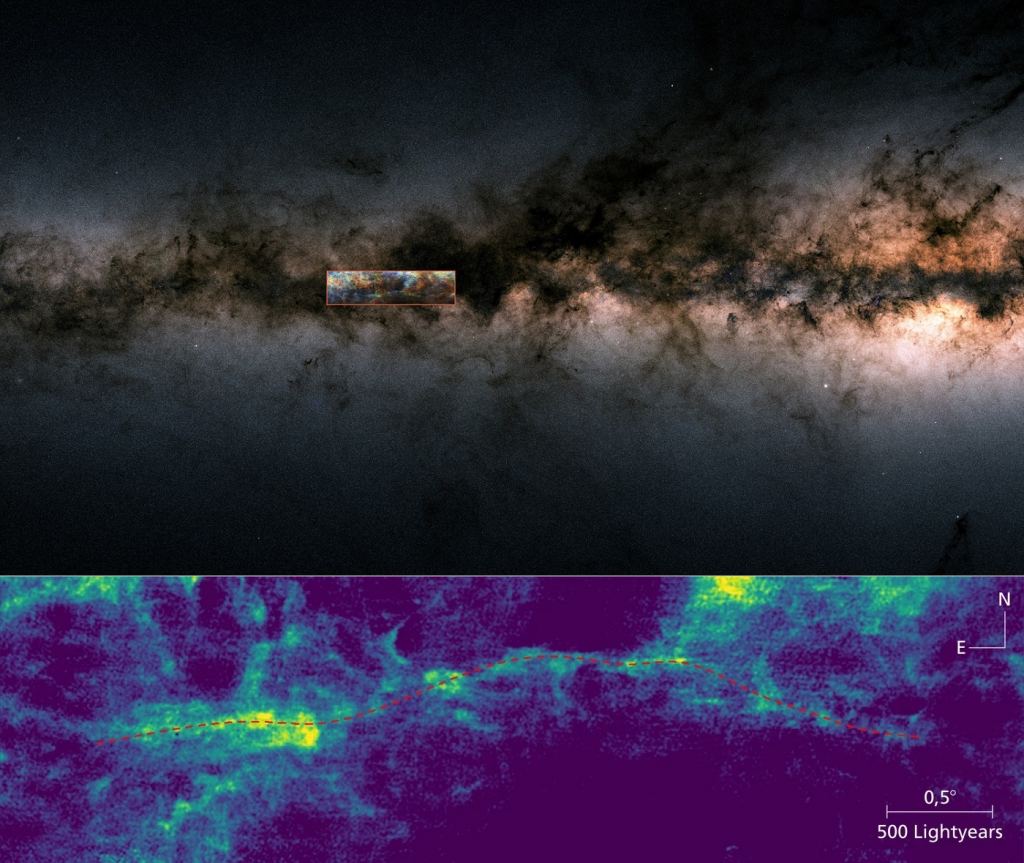A 3,900-light-year hydrogen filament, ‘Maggie,’ reveals mysteries of the Milky Way.
Key Takeaways
- Astronomers discovered “Maggie,” a massive 3,900-light-year-long hydrogen filament in our galaxy.
- This is one of the longest coherent structures ever observed in the Milky Way.
- Maggie offers insights into the transition of atomic to molecular hydrogen, key to star formation.
- Observations show Maggie’s hydrogen gas moves uniformly, supporting its identity as a single structure.
- Future telescopes like JWST and SKA could uncover more about Maggie and early star formation.
______
Discovery of Maggie: A Giant Filament of Hydrogen
An international team of astronomers, led by Jonas Syed from the Max Planck Institute of Astronomy (MPIA), has identified one of the largest coherent structures in the Milky Way. This filament of atomic hydrogen, named “Maggie” after Colombia’s Río Magdalena river, spans 3,900 light-years in length and 130 light-years in width. It is located about 55,000 light-years away on the far side of our galaxy and extends roughly 1,600 light-years below the galactic plane.
The discovery, published in Astronomy & Astrophysics, relied on data from the HI/OH/Recombination line survey of the Milky Way (THOR), which uses the Karl G. Jansky Very Large Array (VLA) in New Mexico. THOR’s observations of the interstellar medium (ISM) provided key insights into molecular cloud formation and the conversion of atomic hydrogen (H) to molecular hydrogen (H₂)—essential steps in star formation.
Insights Into Star Formation
Maggie’s size and coherence make it a particularly exciting find. Typical molecular gas clouds in the galaxy measure around 800 light-years, but Maggie dwarfs these structures. Analysis of Maggie’s hydrogen gas revealed a mean velocity of 54 km/s, with minimal variation along its length, confirming its identity as a unified structure.
Researchers estimate Maggie contains 8% molecular hydrogen by mass, with gas converging at points along the filament. This suggests that atomic hydrogen is condensing into molecular form, a critical phase in star formation. Despite this progress, many questions remain, particularly about the mechanisms driving this transition.

Future Research Prospects
The discovery of Maggie offers astronomers a unique laboratory for studying the early phases of star formation and the evolution of galaxies. Upcoming observatories, such as the James Webb Space Telescope (JWST) and the Square Kilometer Array (SKA), are expected to shed further light on Maggie and similar structures. These instruments will allow astronomers to explore the “Cosmic Dawn” and the emergence of the first stars in unprecedented detail.
As Syed explained, additional data is already awaiting analysis, promising more breakthroughs in our understanding of the cosmos. Maggie is not only a landmark discovery in the Milky Way but also a gateway to unraveling the mysteries of hydrogen, the building block of stars and galaxies.



